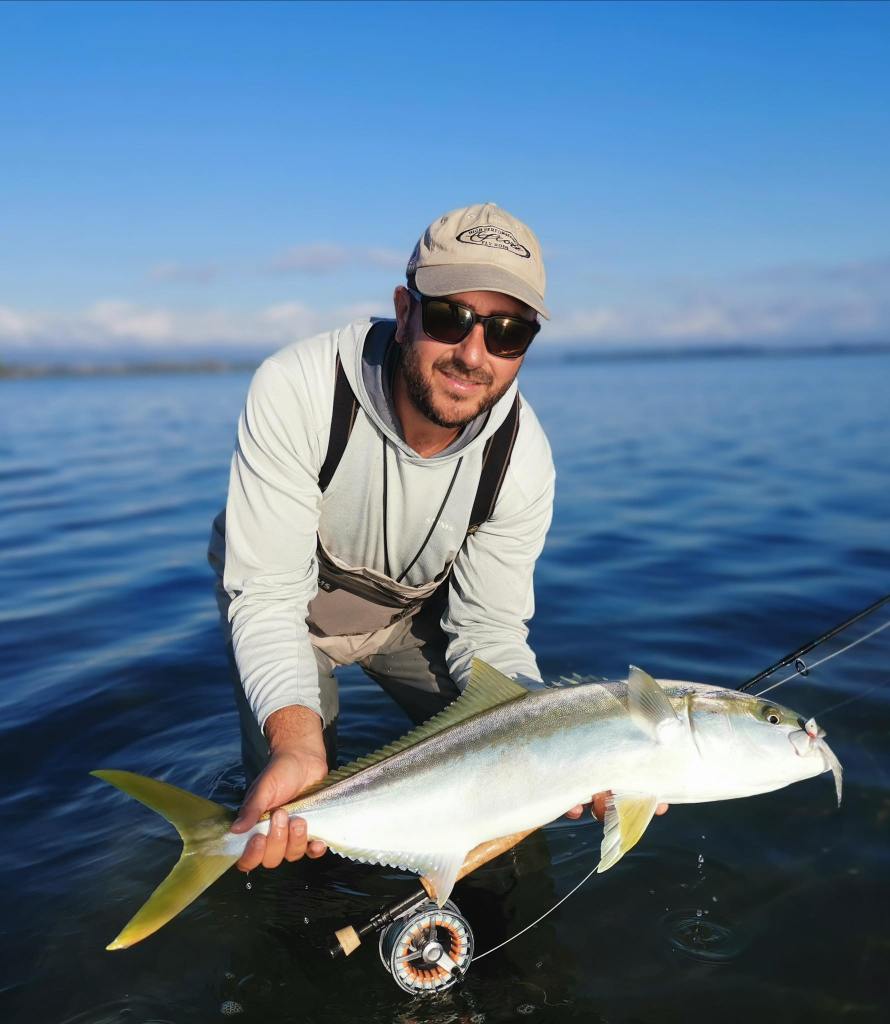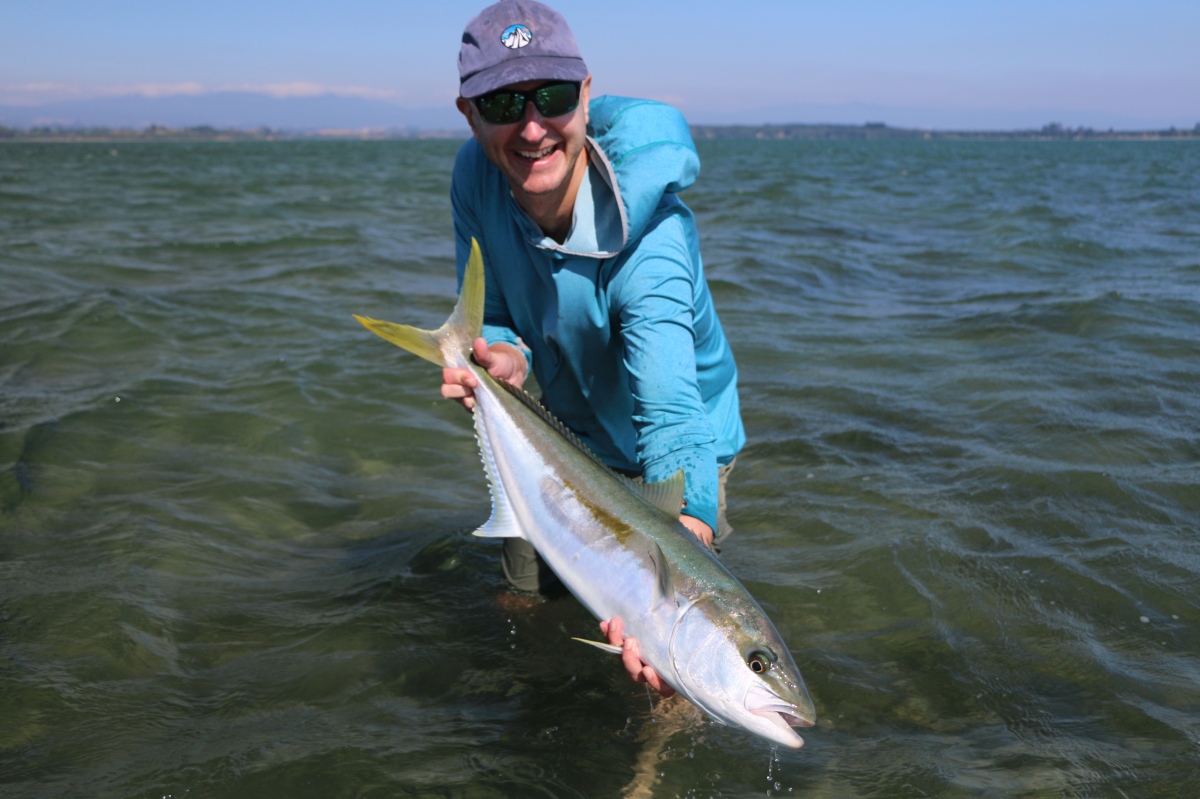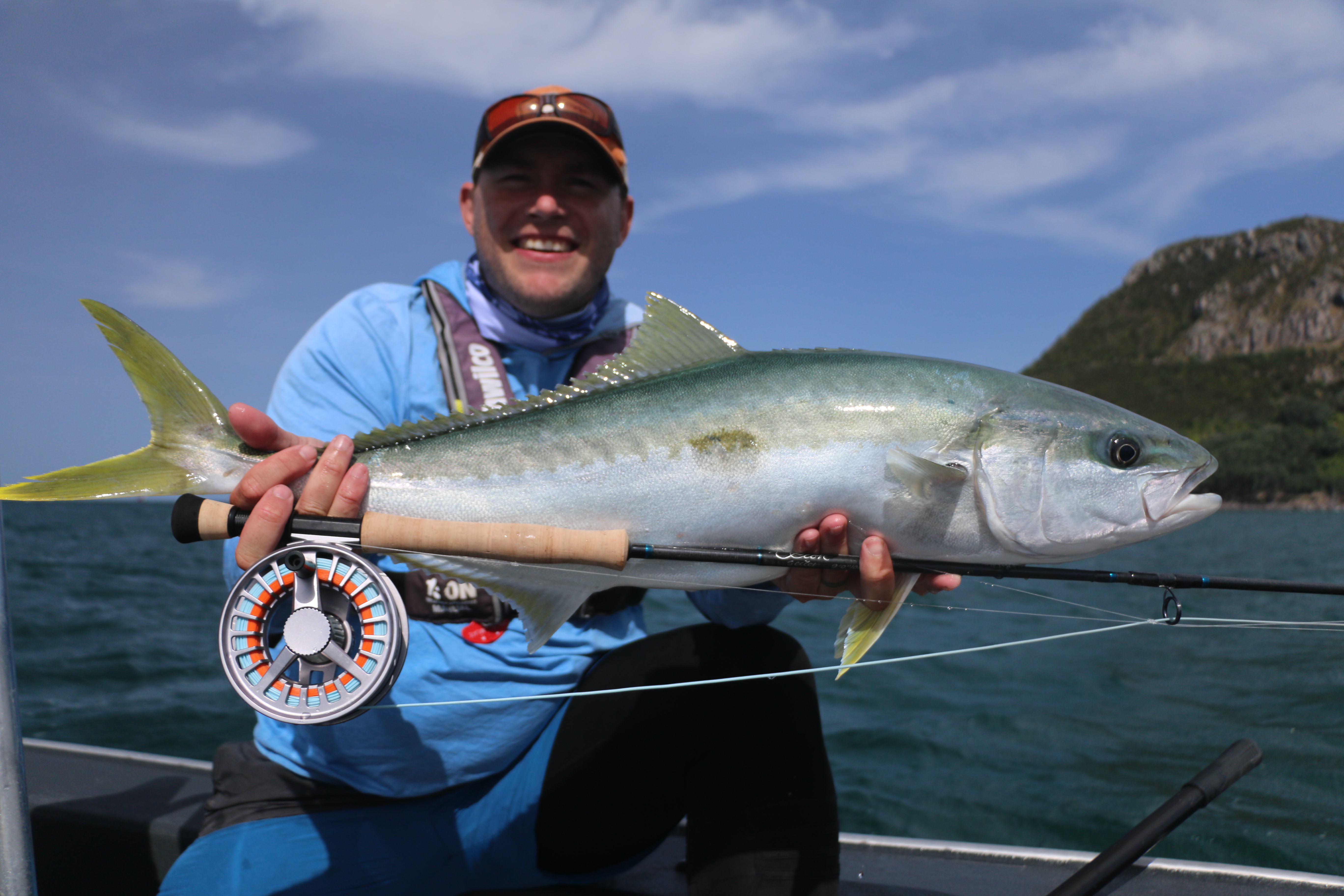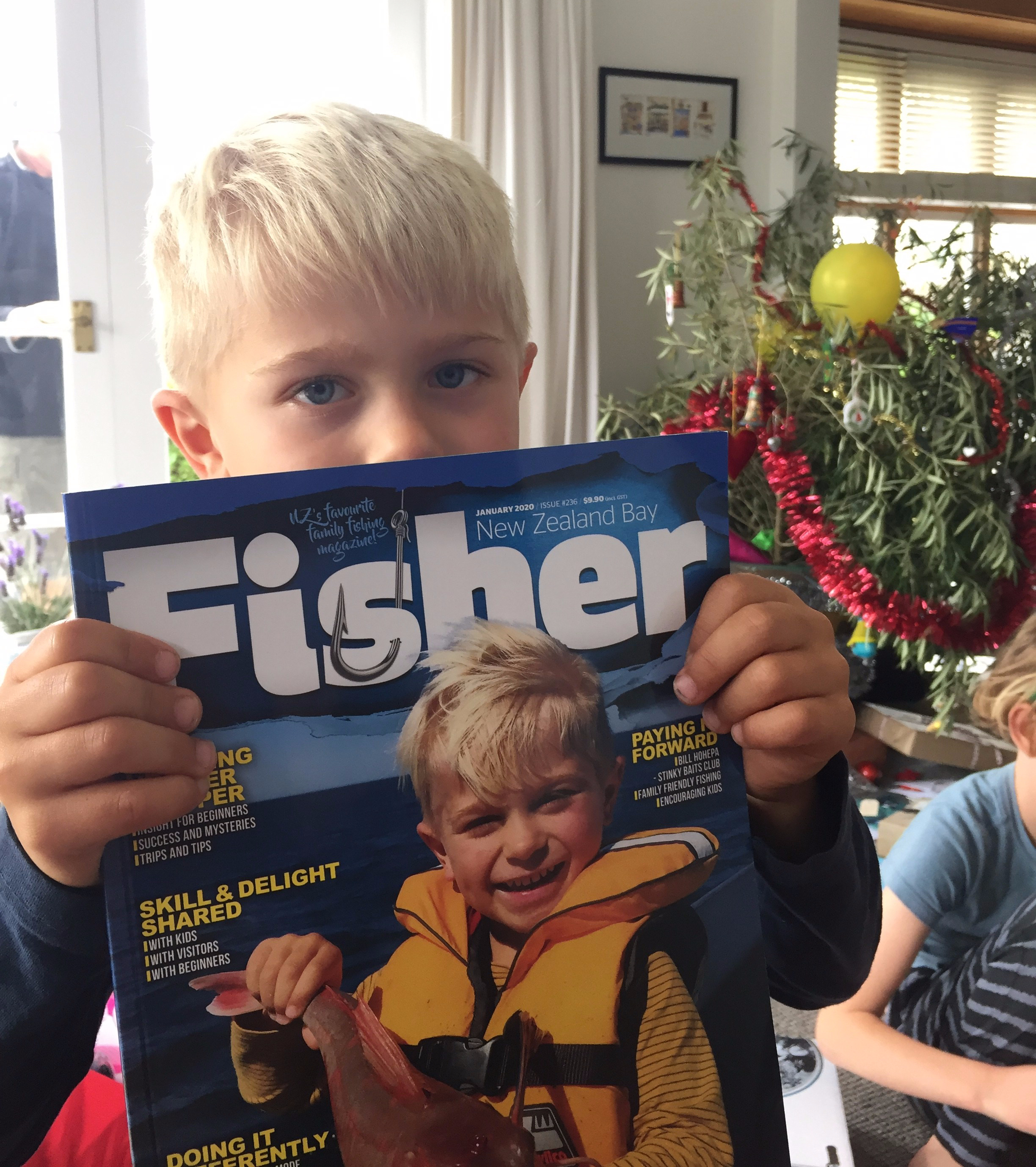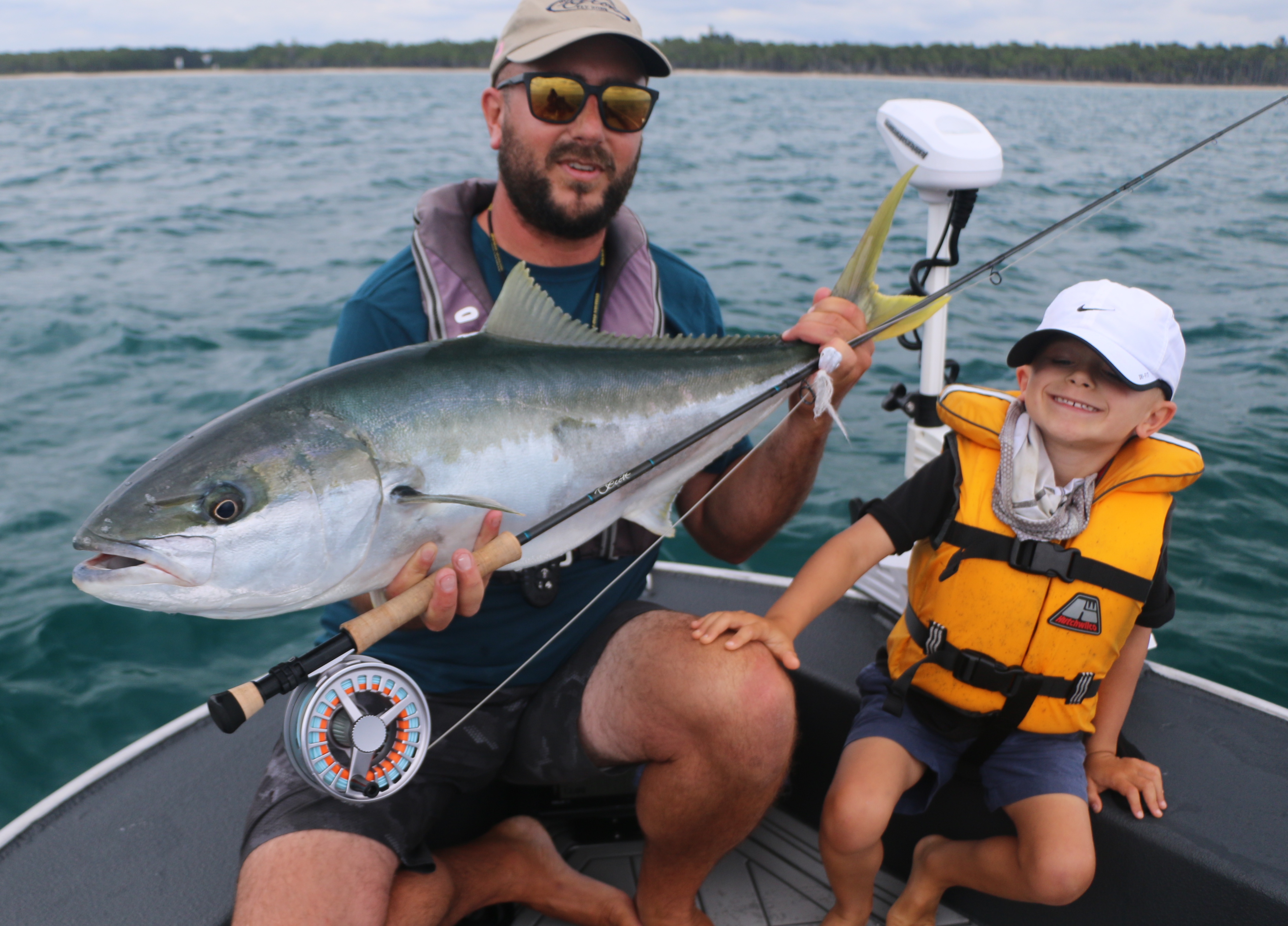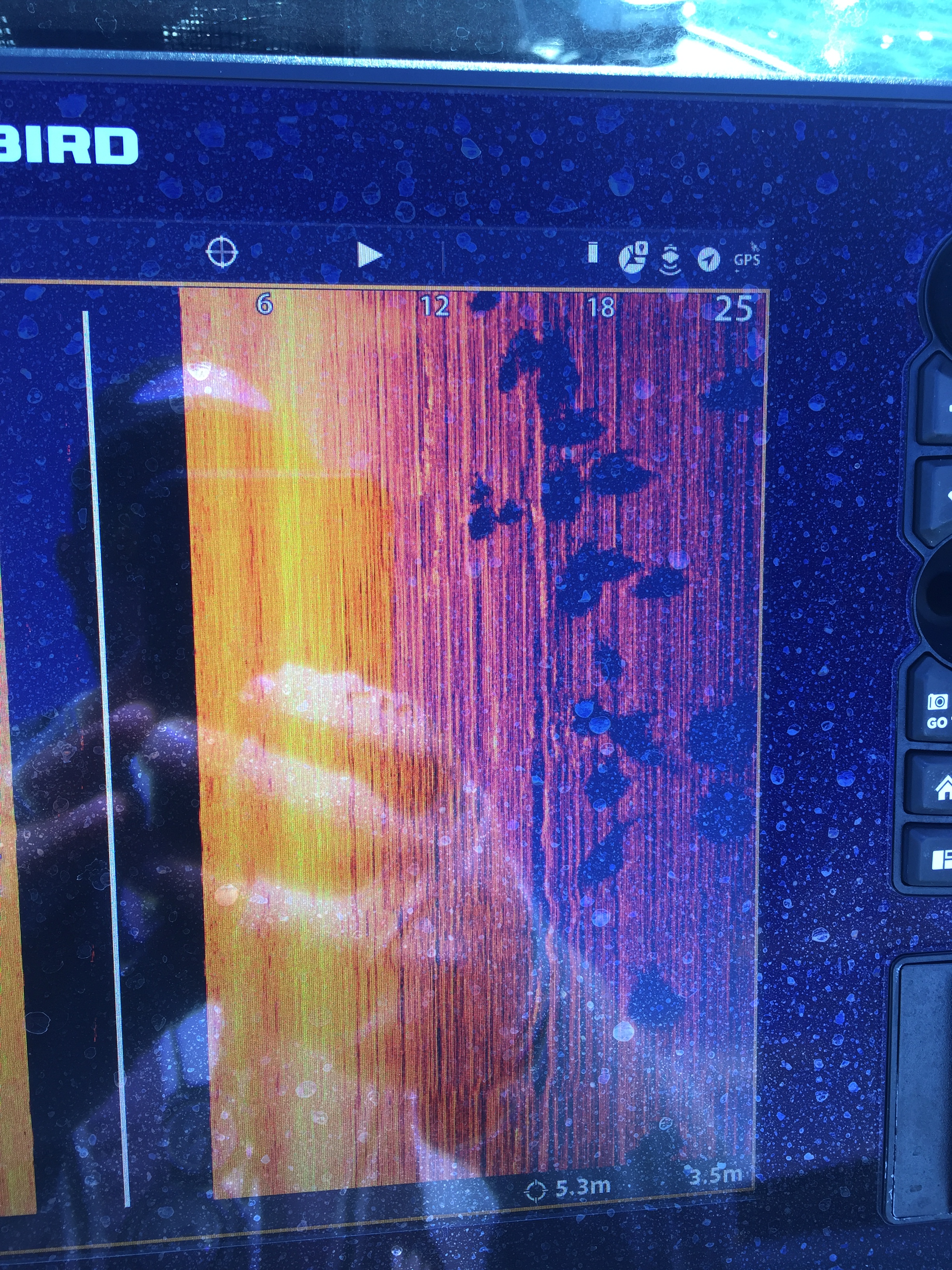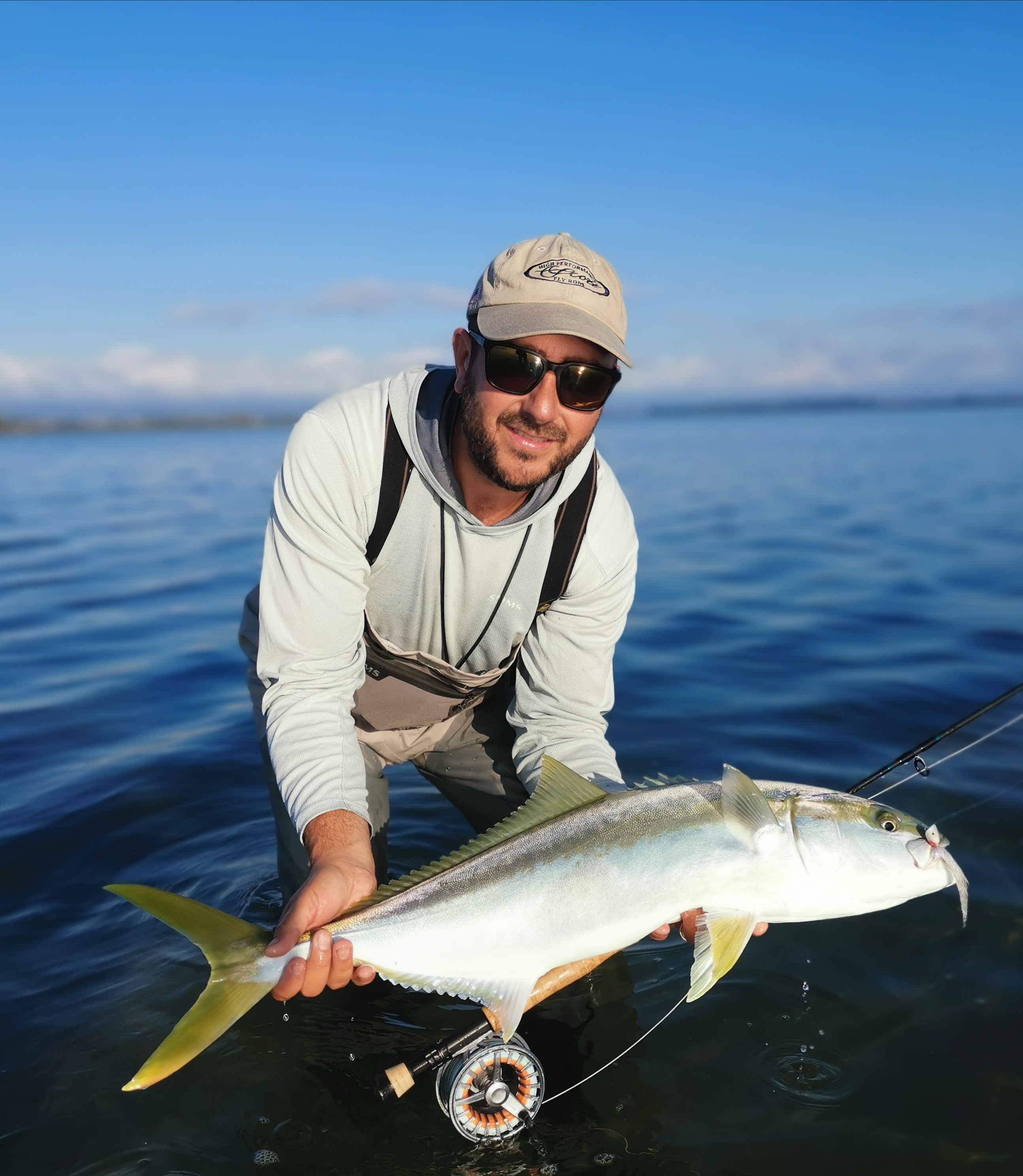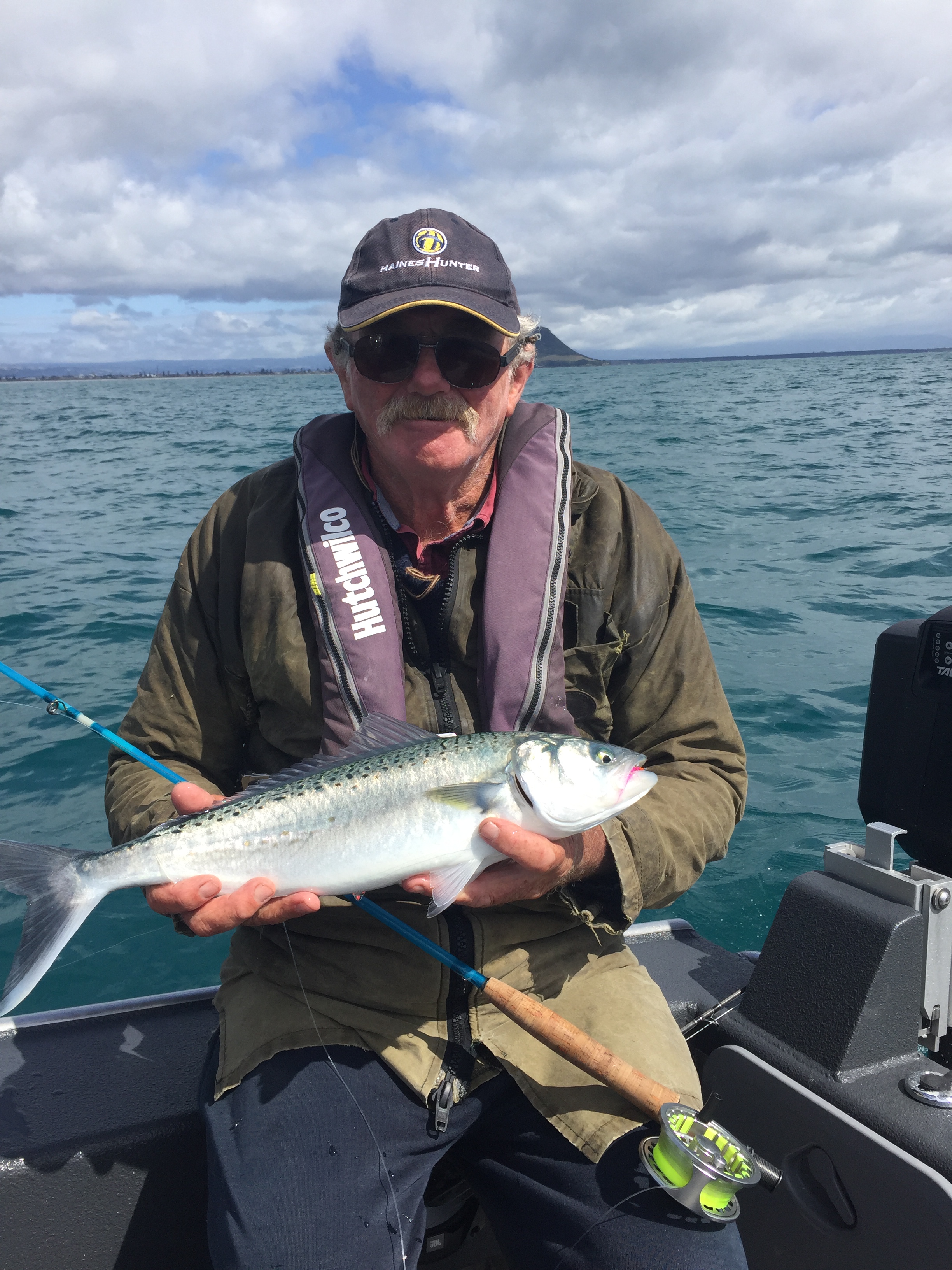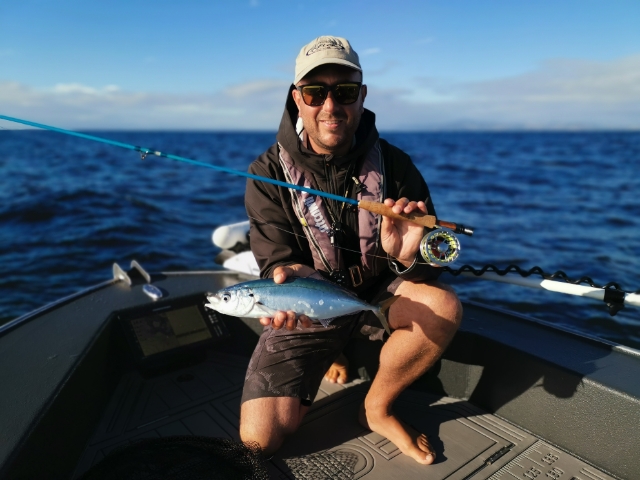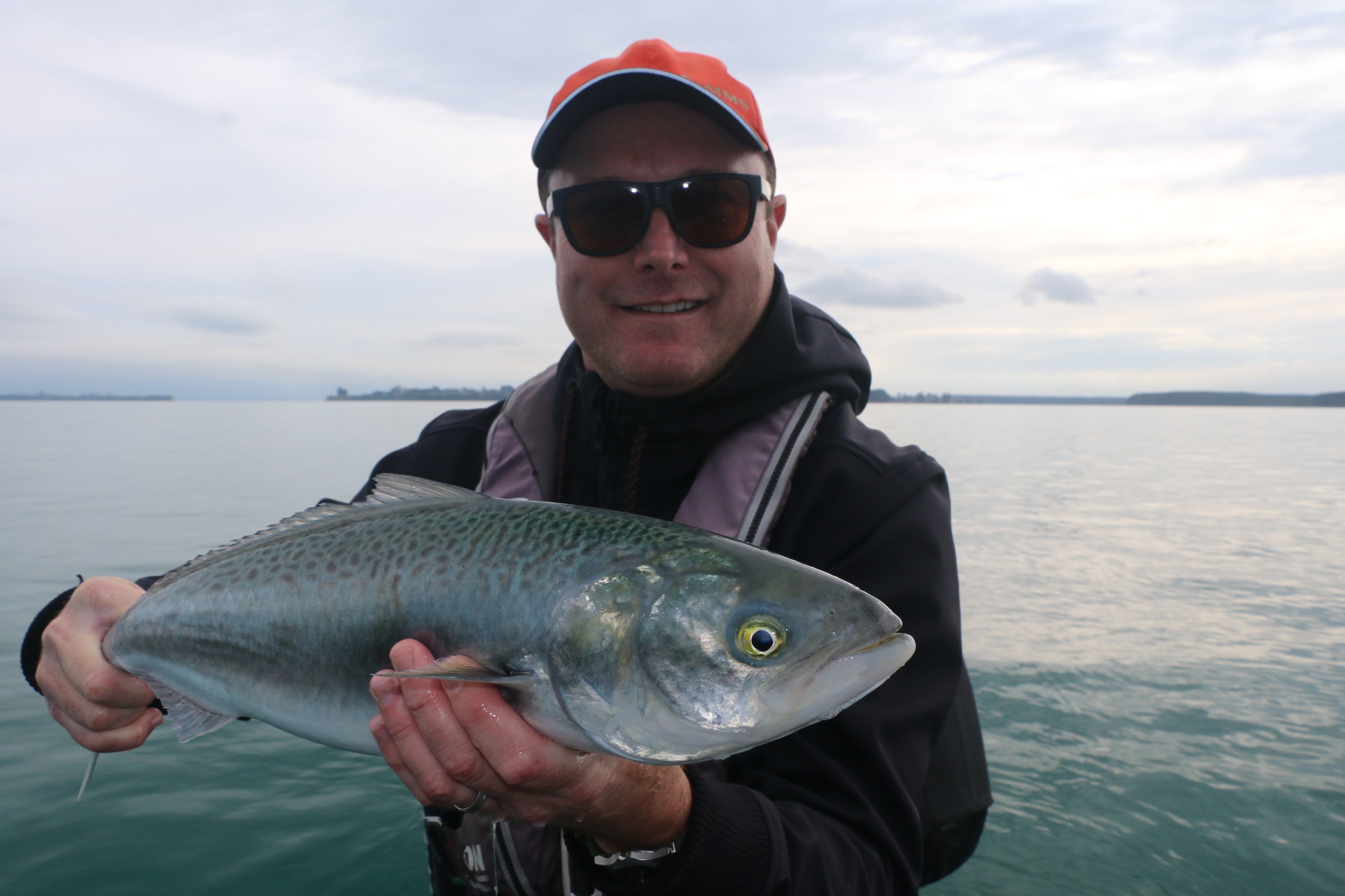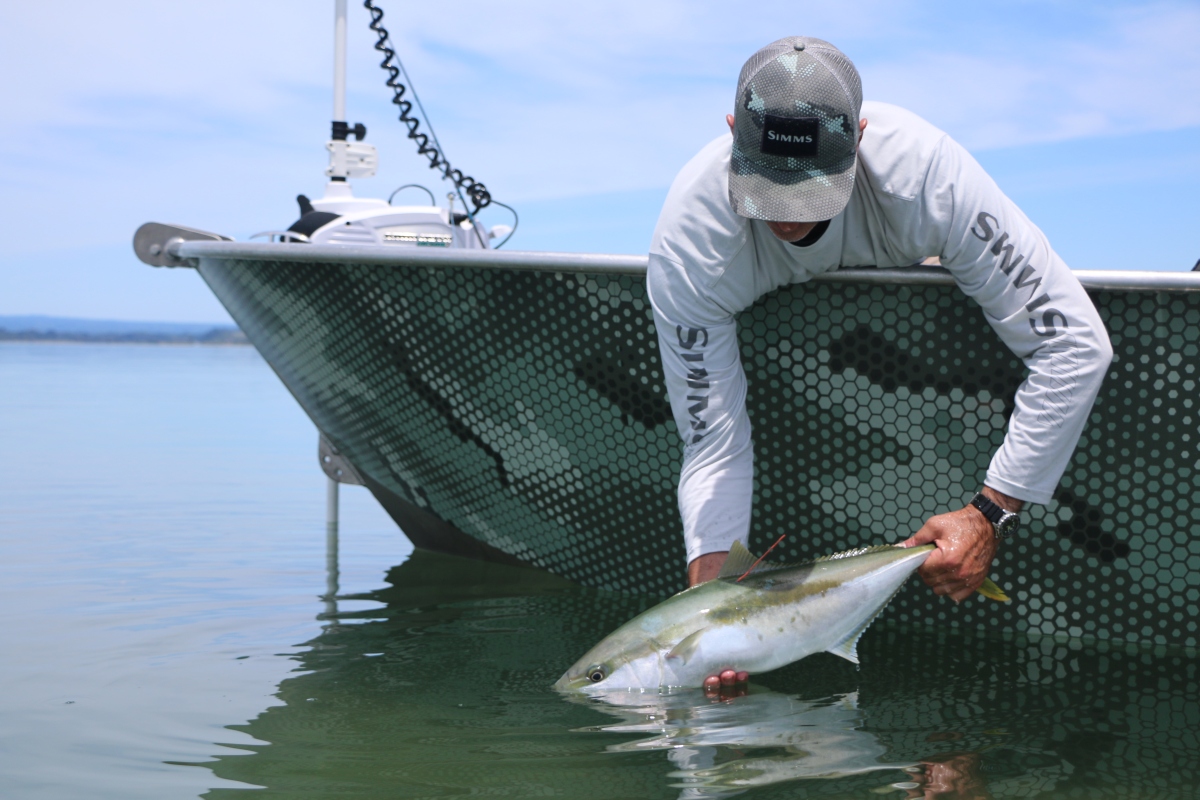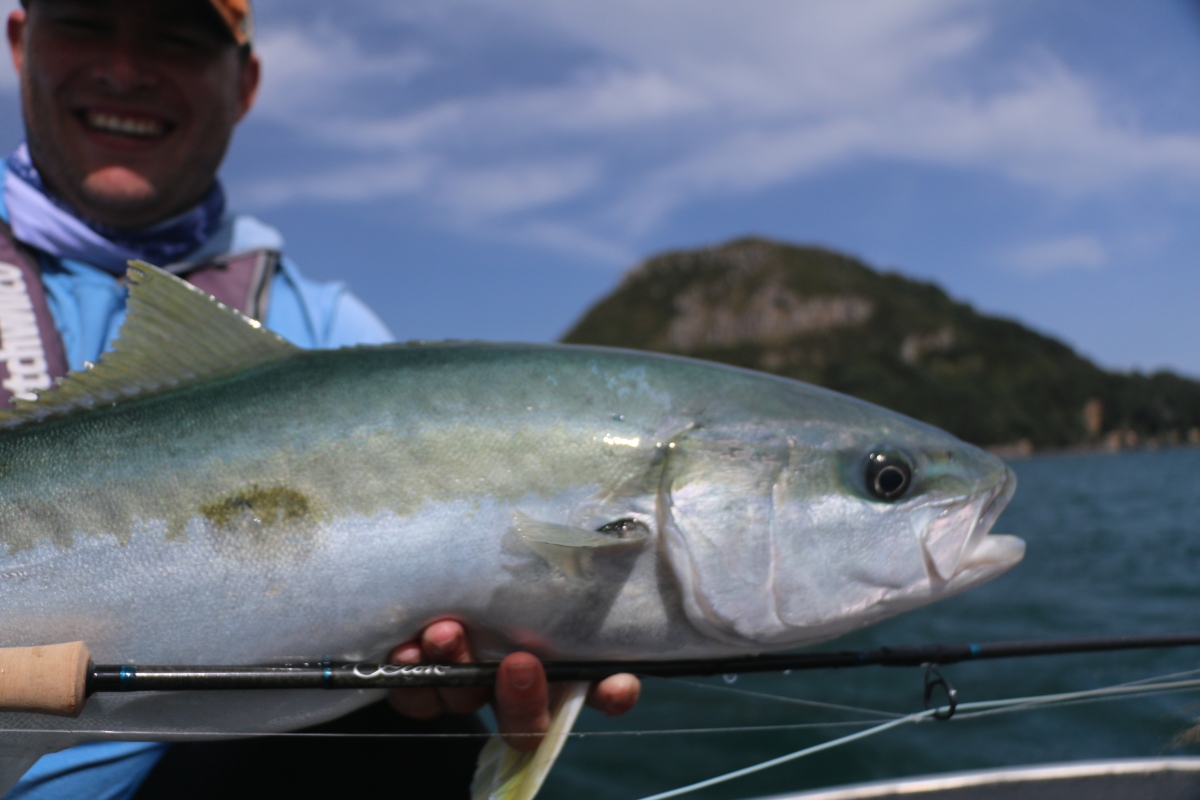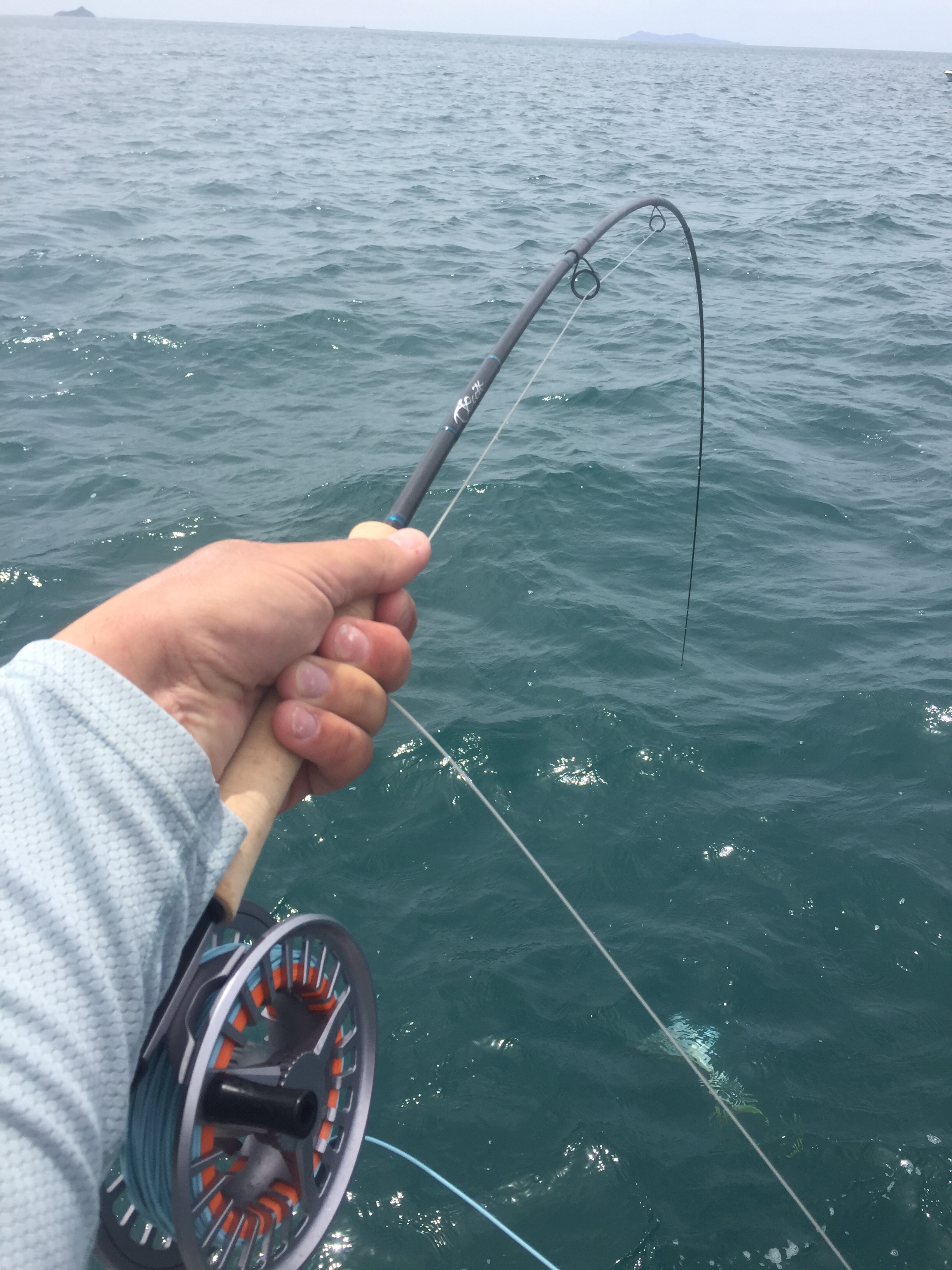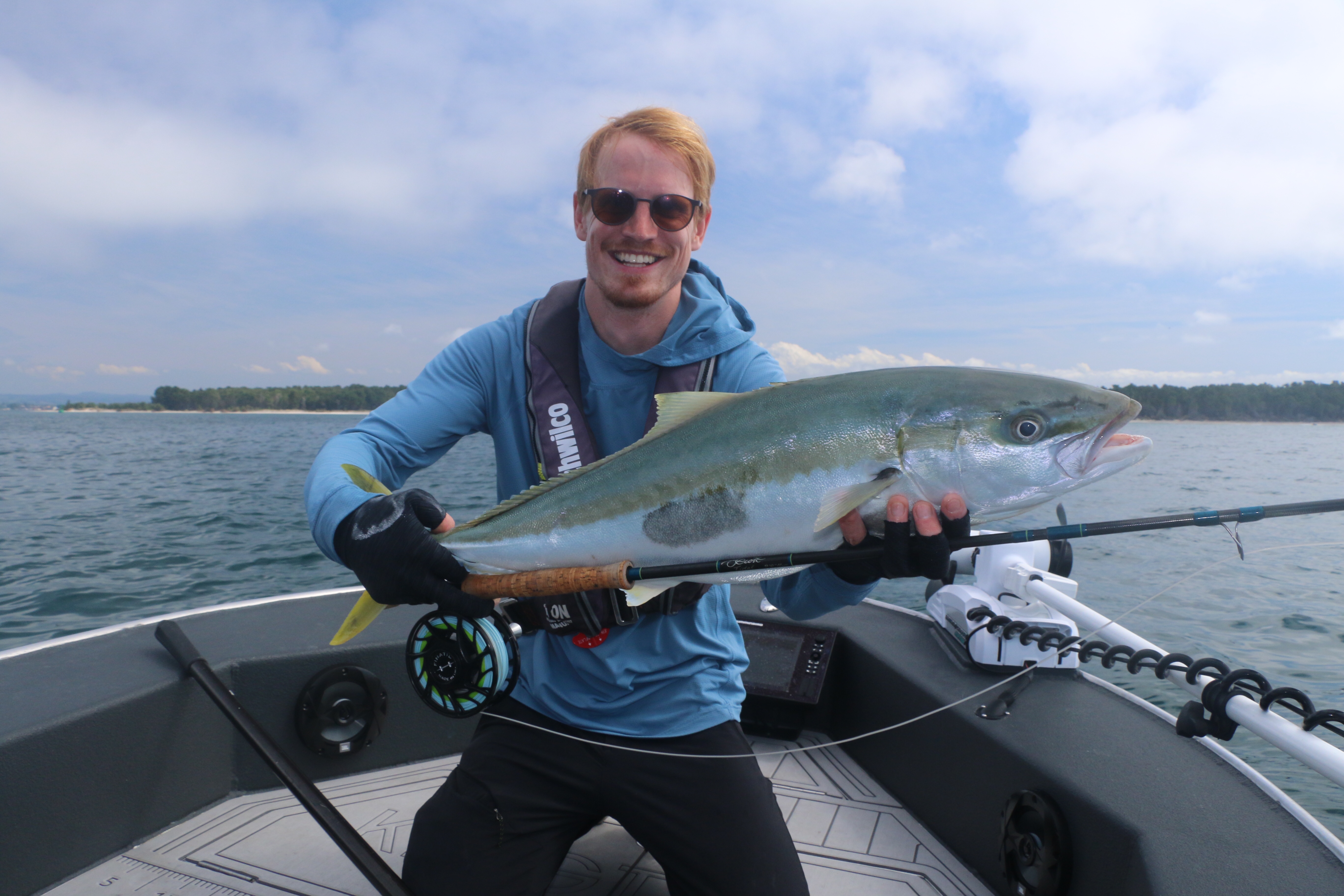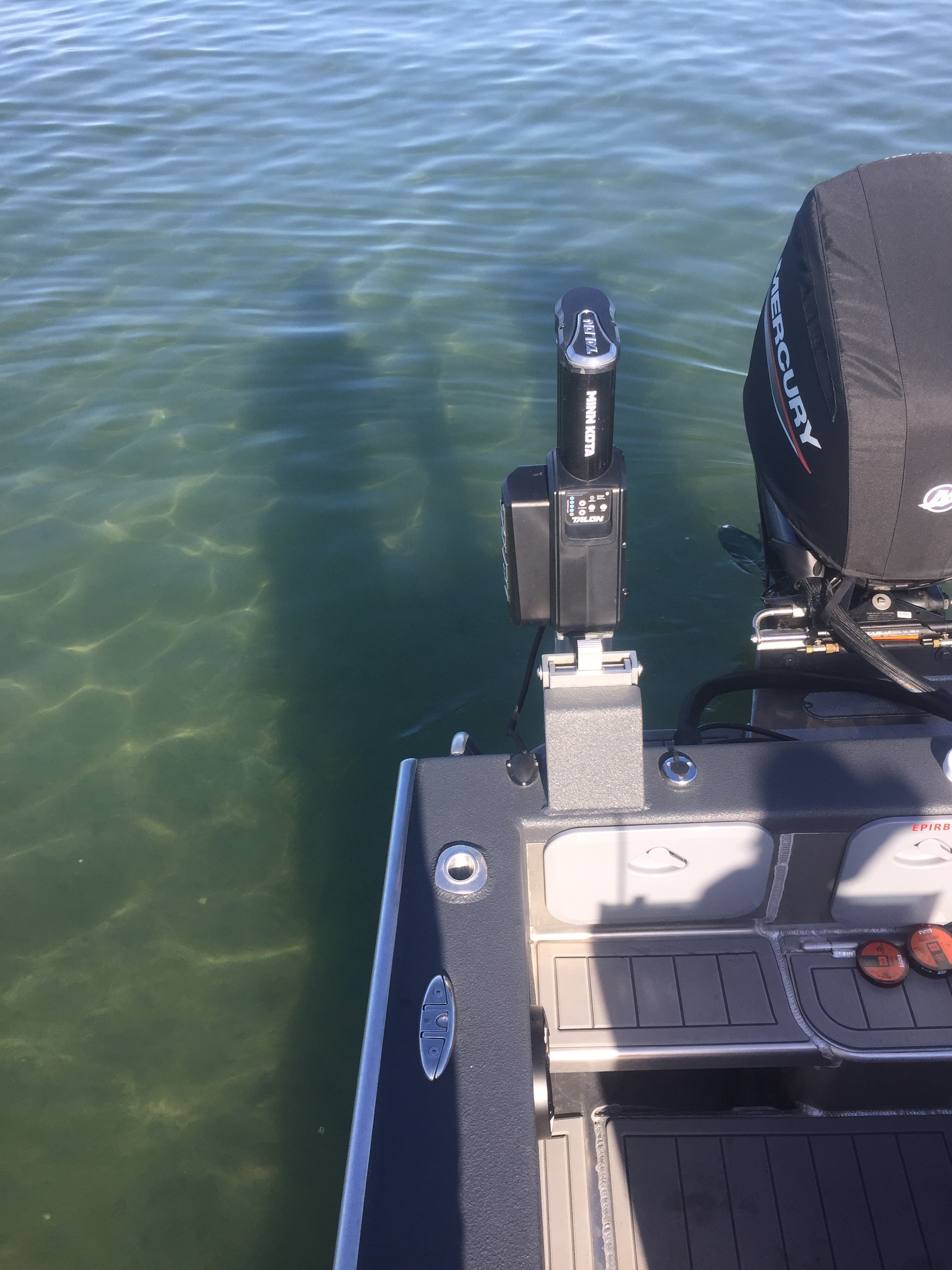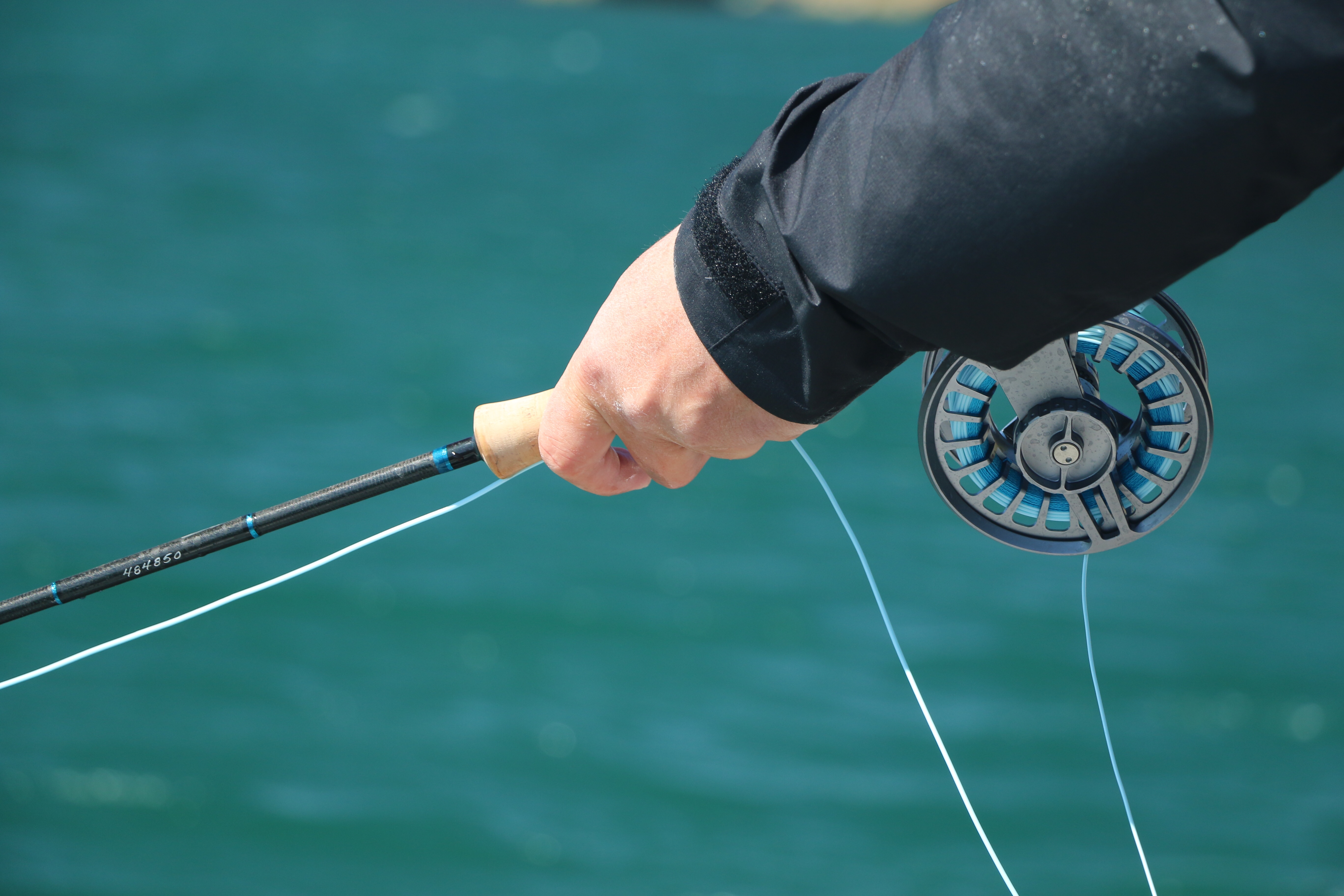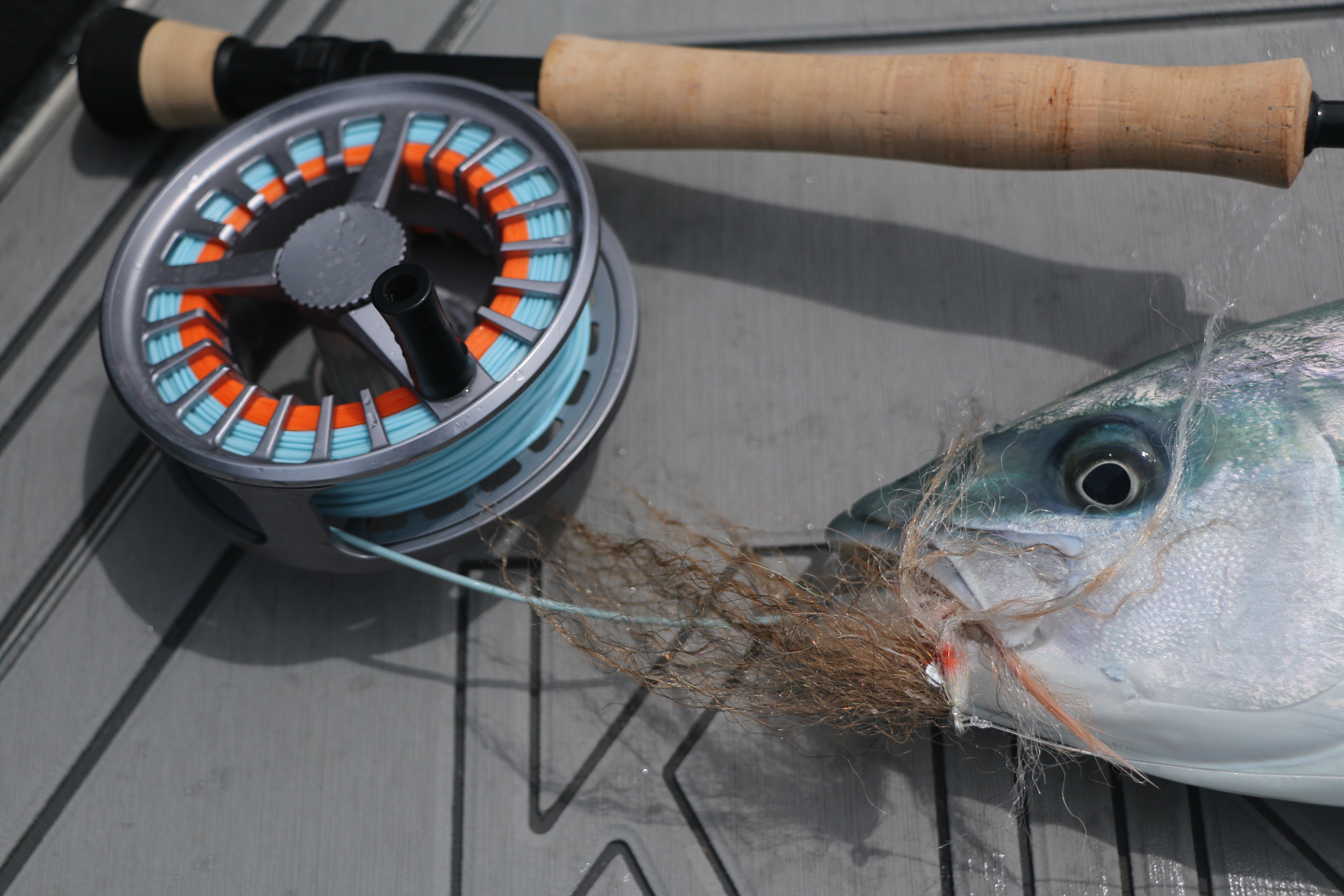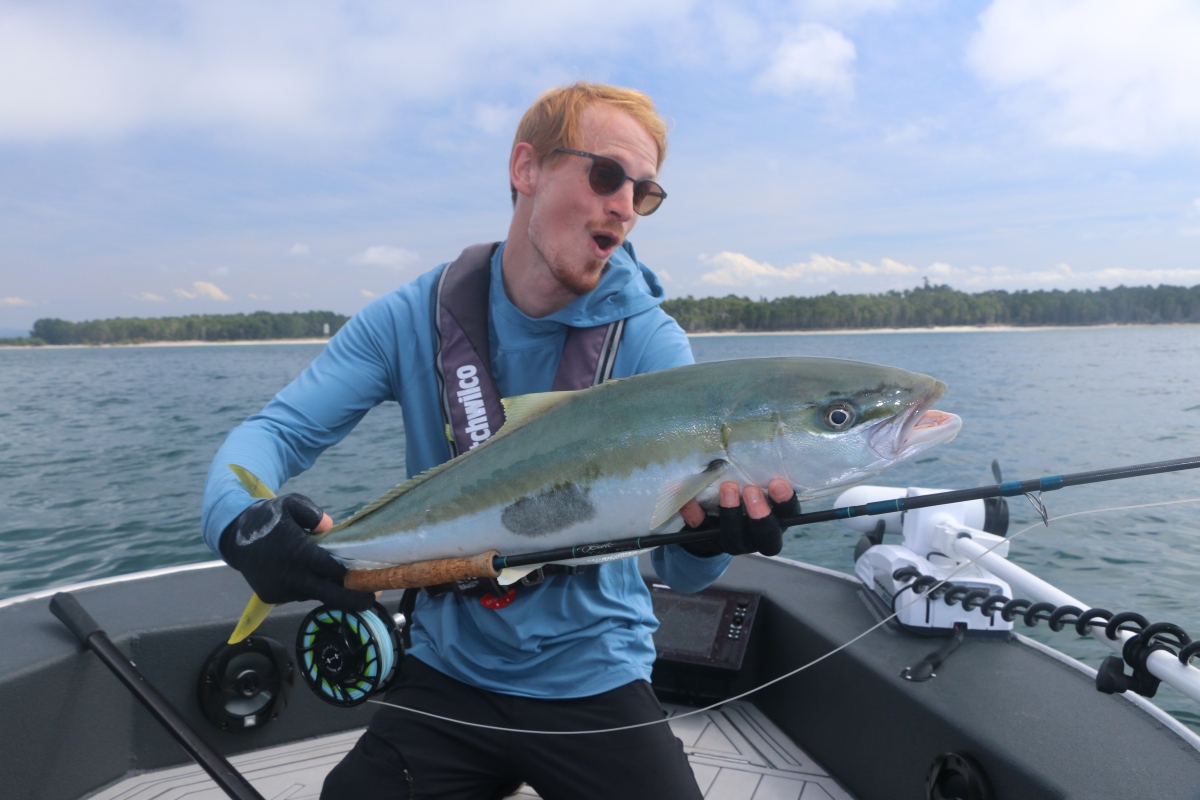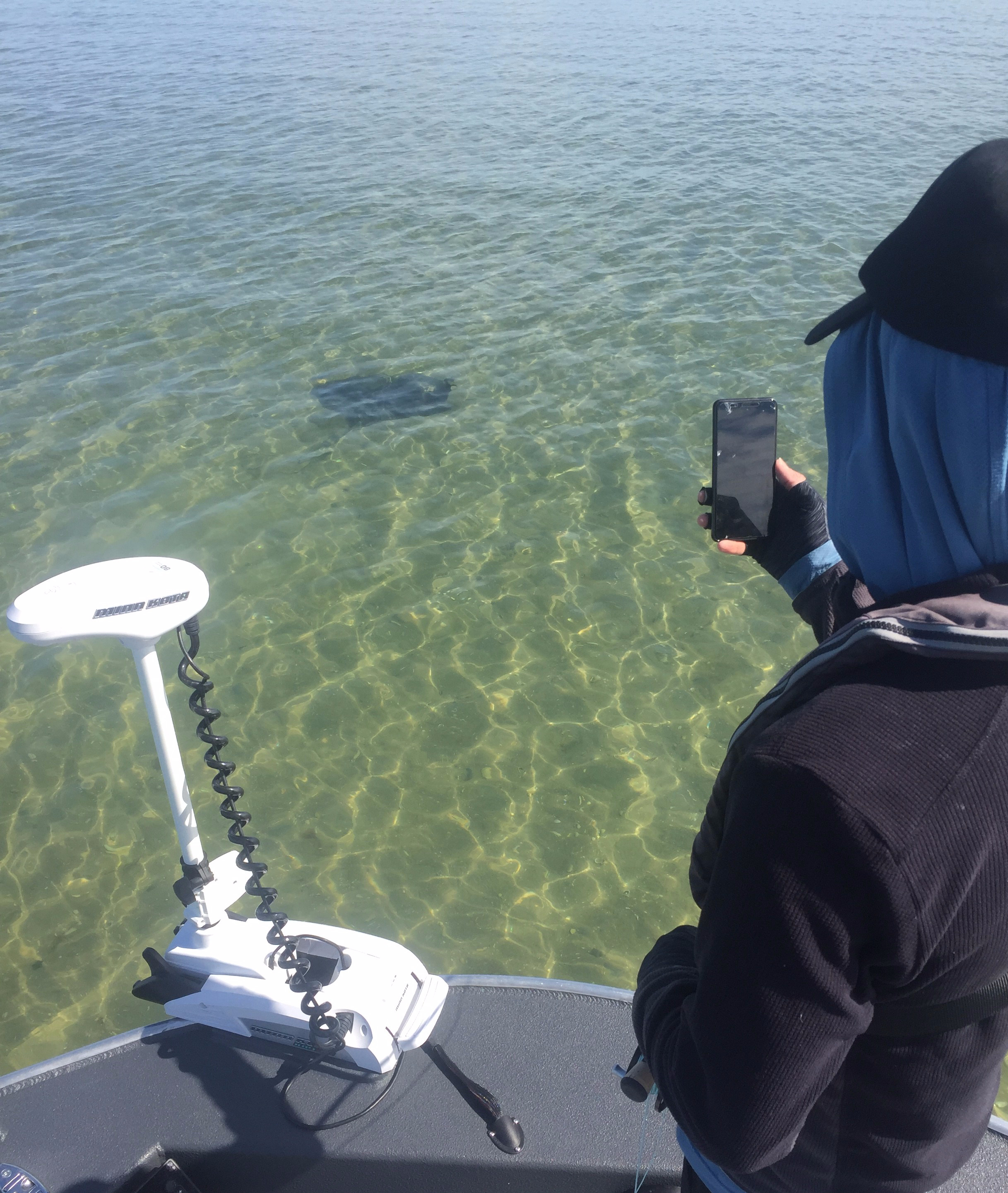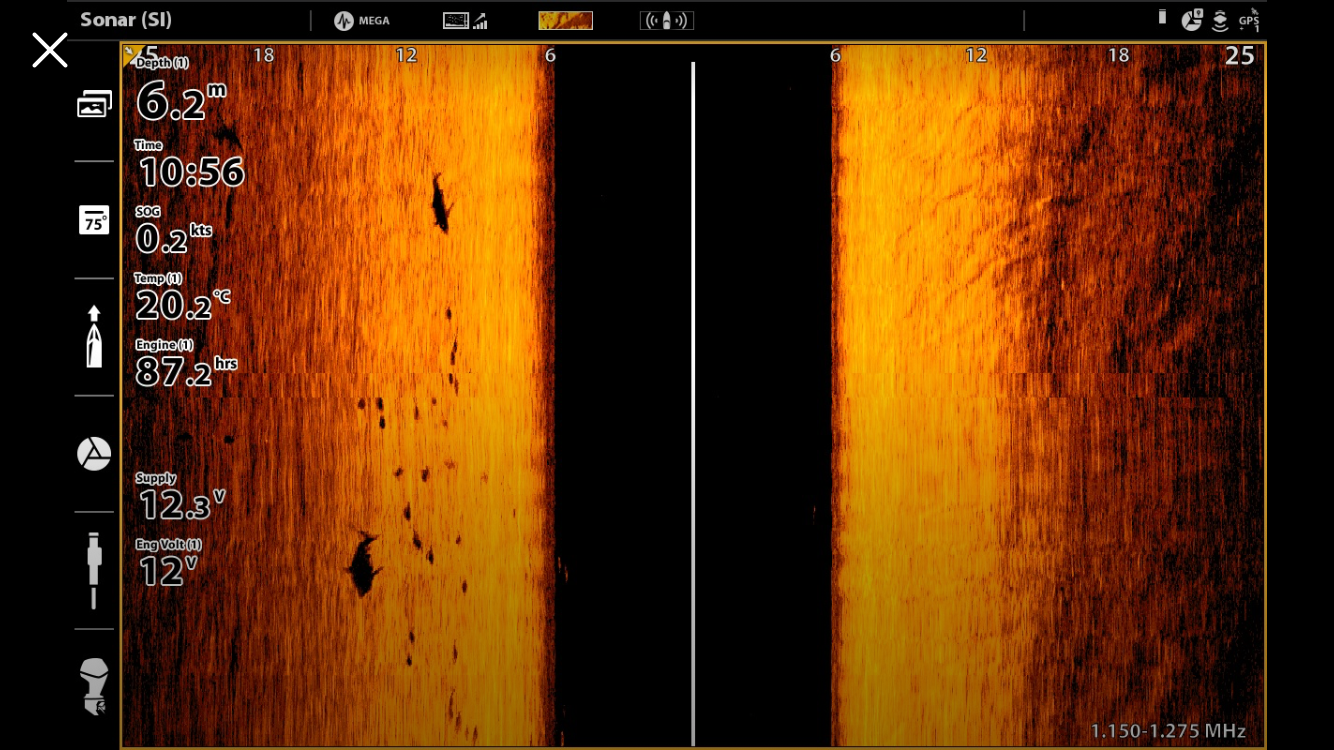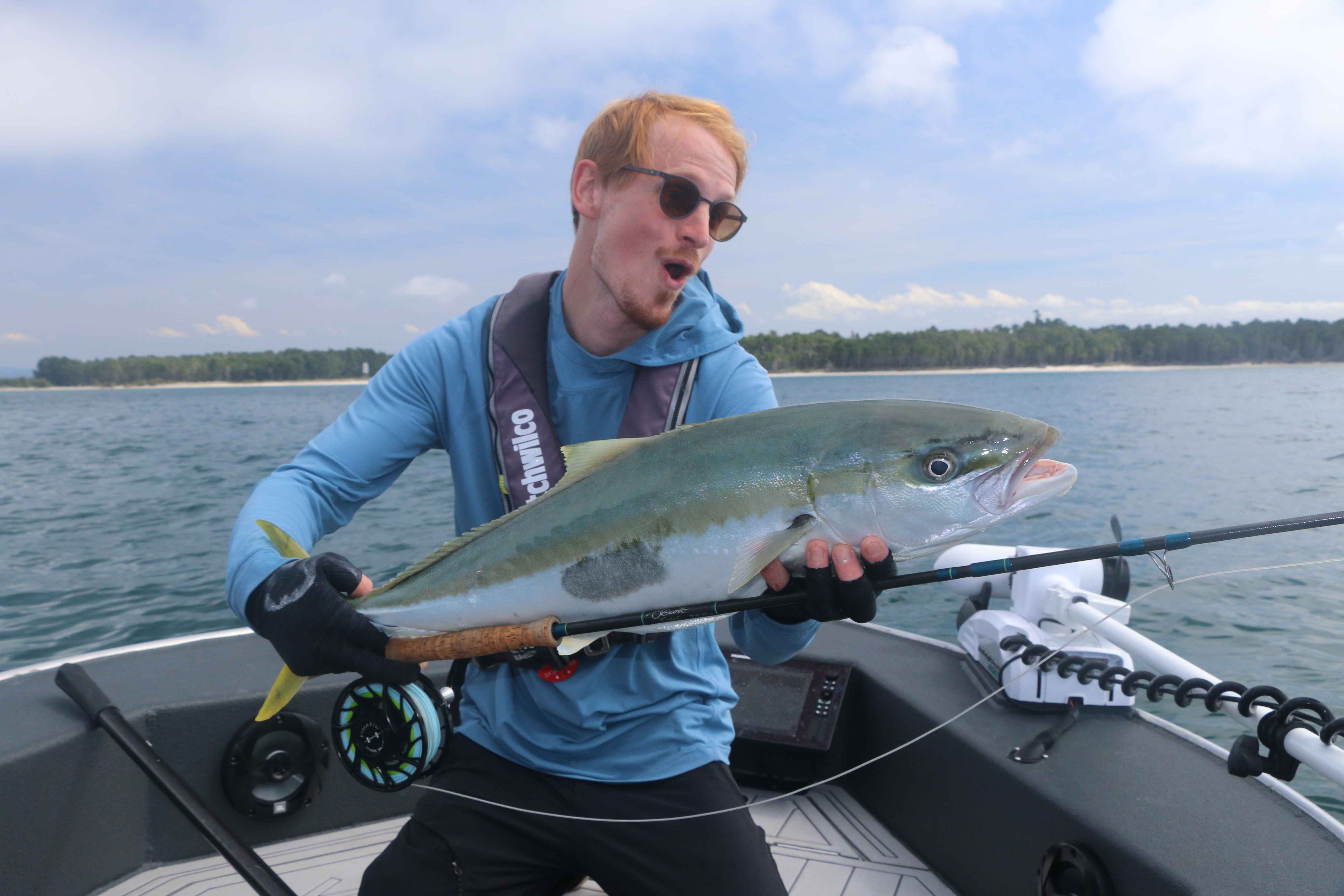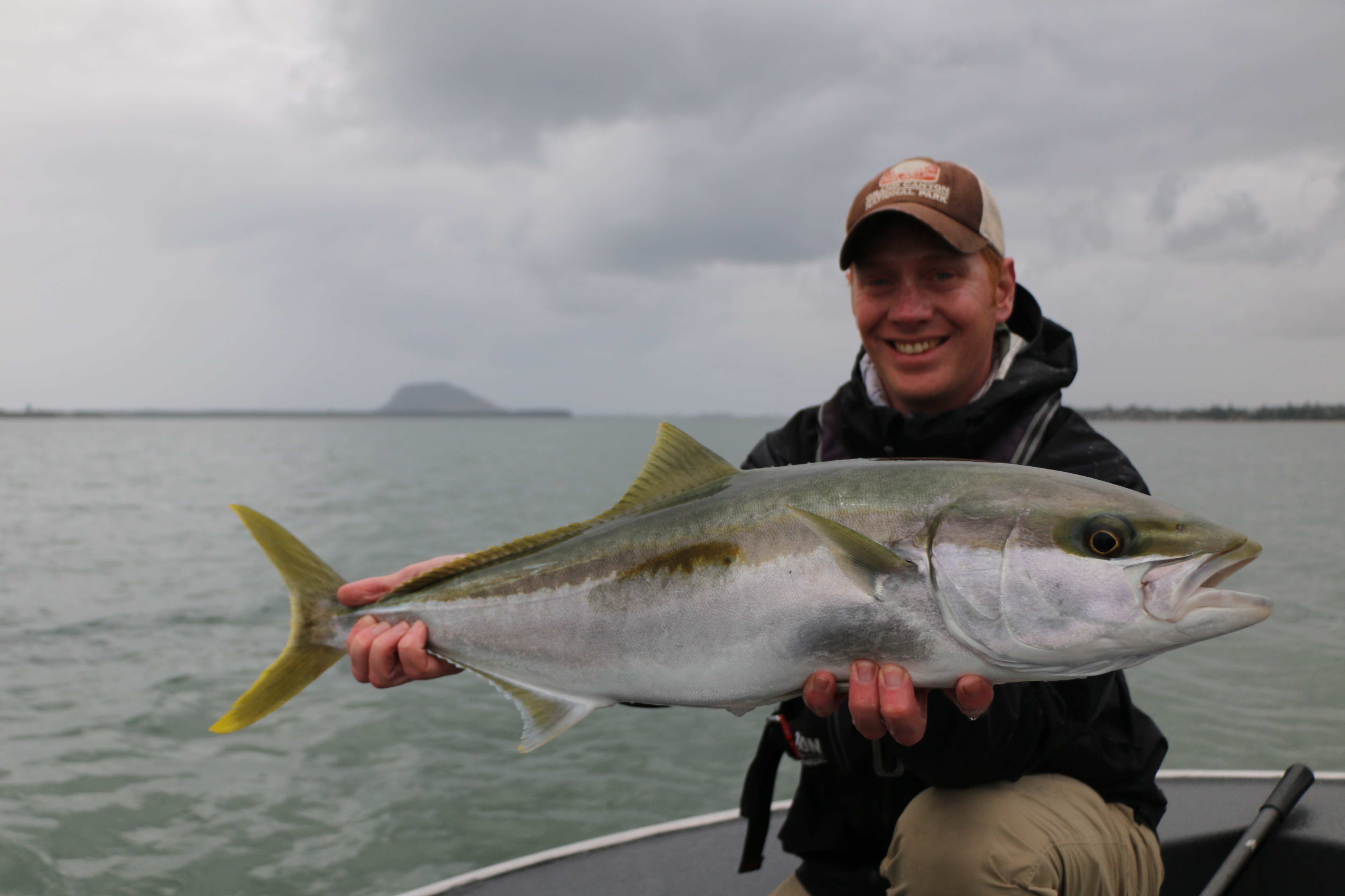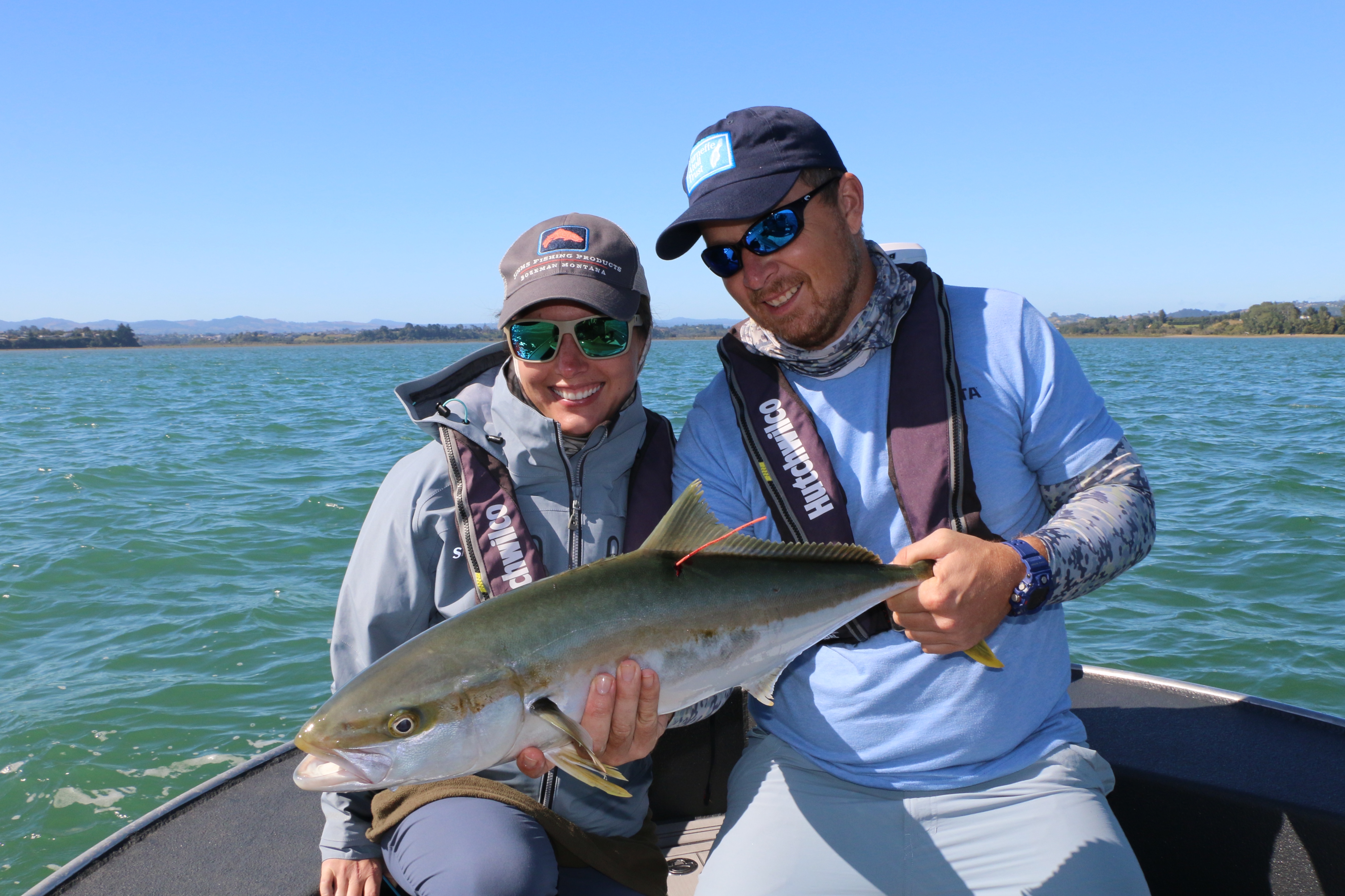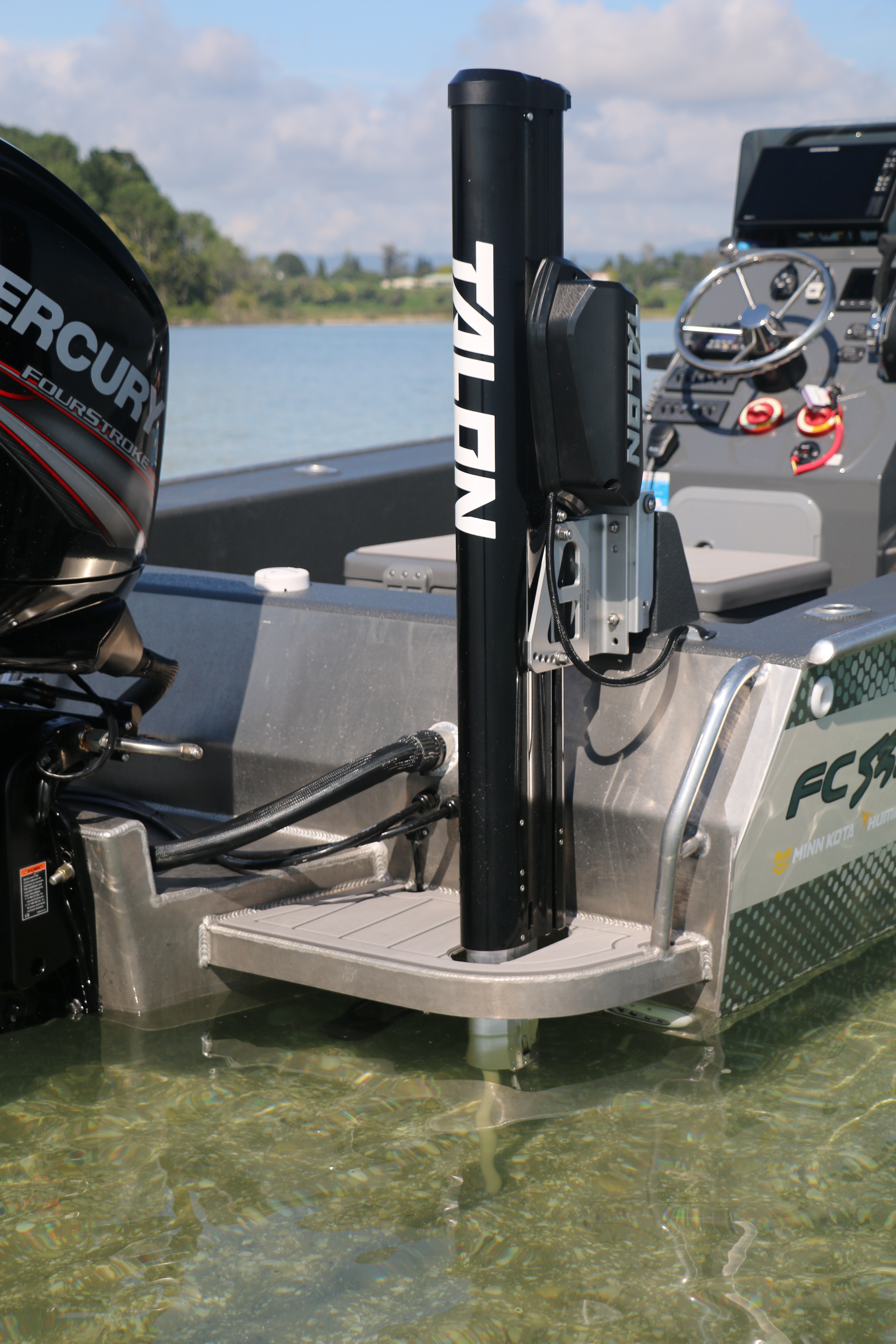We’ve fished these heads for many seasons now and have refined what works best, not only for the kingfish but for ourselves also. Here are a few tips on how to tie Double Barrel Poppers and a few more on how to effectively fish them.
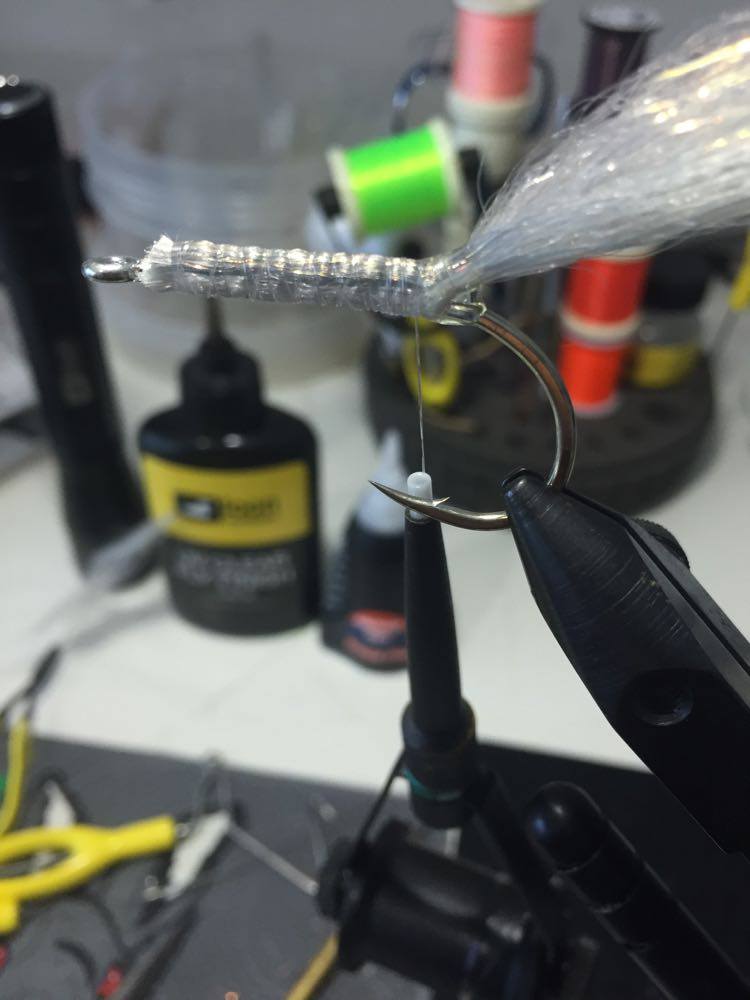
1) Use A Bushy Material For The Tail
This will help anchor the fly better in the water surface and stop the fly skating and dancing upon the retrieve, especially handy when the conditions are a little choppy. Having the popper sitting tight in the water gives you a better shot at making some noise.
2) Faux Bucktail Acts As A Tail Stiffener
Tie a short section into the centre of tail roughly half the tail length. This will give some structure to the tail section and help prevent dreaded tails wraps, one of the most frustrating things to happen when presenting to fish and needing the first shot to count.
3) Once Tail Materials Are Tied In
Take 8-10 wraps around material at base – use Loon Thick UV resin to secure and maintain upward angle. There’s a lot to be gained from this simple step.
- The upward tail angle will see the cupped popper face sit higher and angled back, giving you a far more aggressive chug.
- The hook will keel far better and help stop the rolling motion, this gives you a better walk the dog type swimming action
- Tail wraps are nearly eliminated – BUT always check your flies, no matter what
4) Cut Tail Materials At The Eye
This gives more circumference to glue the surface seaducer double barrel popper head on – ensure the hole in popper is minimal, done right you almost don’t need any glue. Use a thick super glue, Loctite powerflex is good, twist the head as you slide it on to get that glue well bedded and make sure the head is sitting square to the hook before it sets up.
5) Don’t Choke The Gape
The more hook available to find a home in the mouth the better. Keep the hole through the head as close to the bottom as possible and you’ll see more solid hook ups and less heart break.
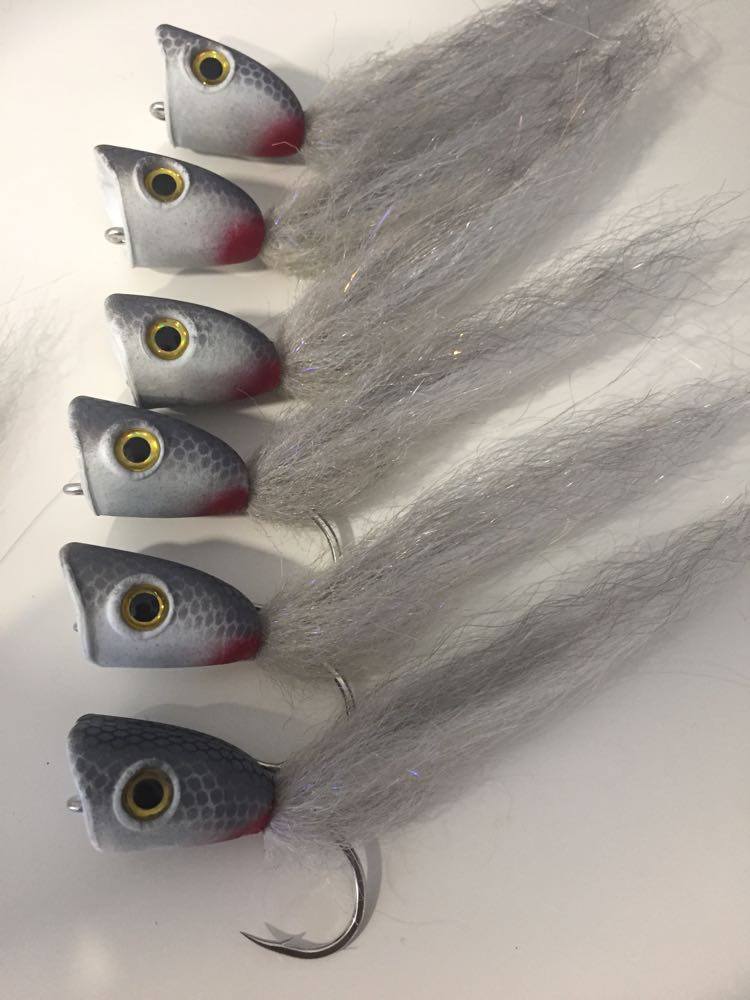

Five Tips On How To Fish A Popper Fly
1) Try An Intermediate Fly Line
When fished on an intermediate line with fluorocarbon the upward angle of tail makes the cupped face sit high and grabs a good chug of air when stripped, having the leader sink below the water tension will cause a bigger tip of the head and consequently more noise. Kingfish love a good deep acoustic resonance, this will pull them in from deeper or further away. Try the Airflo Flatsmaster, easily the workhorse of our operation and a very versatile line for many conditions.
2) Pause The Retrieve
Wait for the fly to resurface before next strip, the kingfish don’t mind – in fact we often hook them while static. Your fly won’t grab more air if it’s underwater already. Part of the knack of pulling deep lying fish up is to also create a big visible smoke trail, the silhouette of it against the sky gives the fish something more to dial in on.
3) Mix Up The Retrieve
To catch the fish you must think like the fish, or something like that. Try being the crippled little fish that is an easy meal but struggling its hardest to get out of danger.
4) Surface Seaducer Double Barrel Popper Head Size Recommendations
Here’s a rough guide to sizing rods and hooks to the popper heads.
- 8wt = Medium head, 2/0 SL12s, 4mm 3d eyes
- 10wt = Large head, 4/0 SL12s, 6mm 3d eyes
- 12wt = XL head, 6/0 SL12s, 8mm 3d eyes
5) Squash The Barbs
It’s good for everyone involved, the fish sometimes suck the flies down deeper during the chaos – don’t be afraid to reach right into their mouths to rescue a fly. We’ve retrieved poppers that float back to the surface after a bust off so know they get spat very quickly so another good reason to go barbless. Plus writing up incident reports sucks, pull the fly out, lick your wounds, have a laugh and fish on.
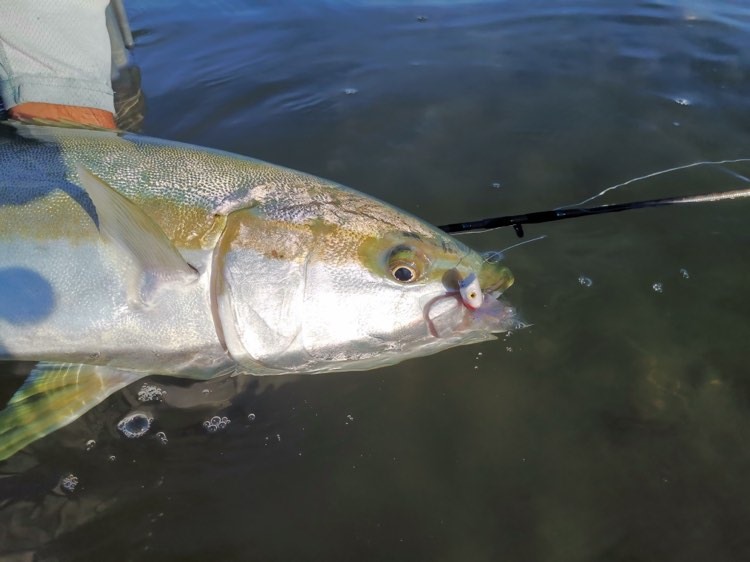
What’s Happening In The Harbour Right Now
There’s some really good fish in the harbour and inshore on kahawai schools currently, certainly giving myself and punters a lot of excitement as often the later season models are very healthy yet cunning. Cross paths with them when they’re feeding hard and you’ll enjoy some world class fishing with a true unsung hero of New Zealand’s saltwater fly fishing.
If you want to take advantage of the quieter flats with less people around over autumn then get in touch, there’s still plenty of fish action out there with a few more of the bigger, badder boys kicking around to make life interesting.
